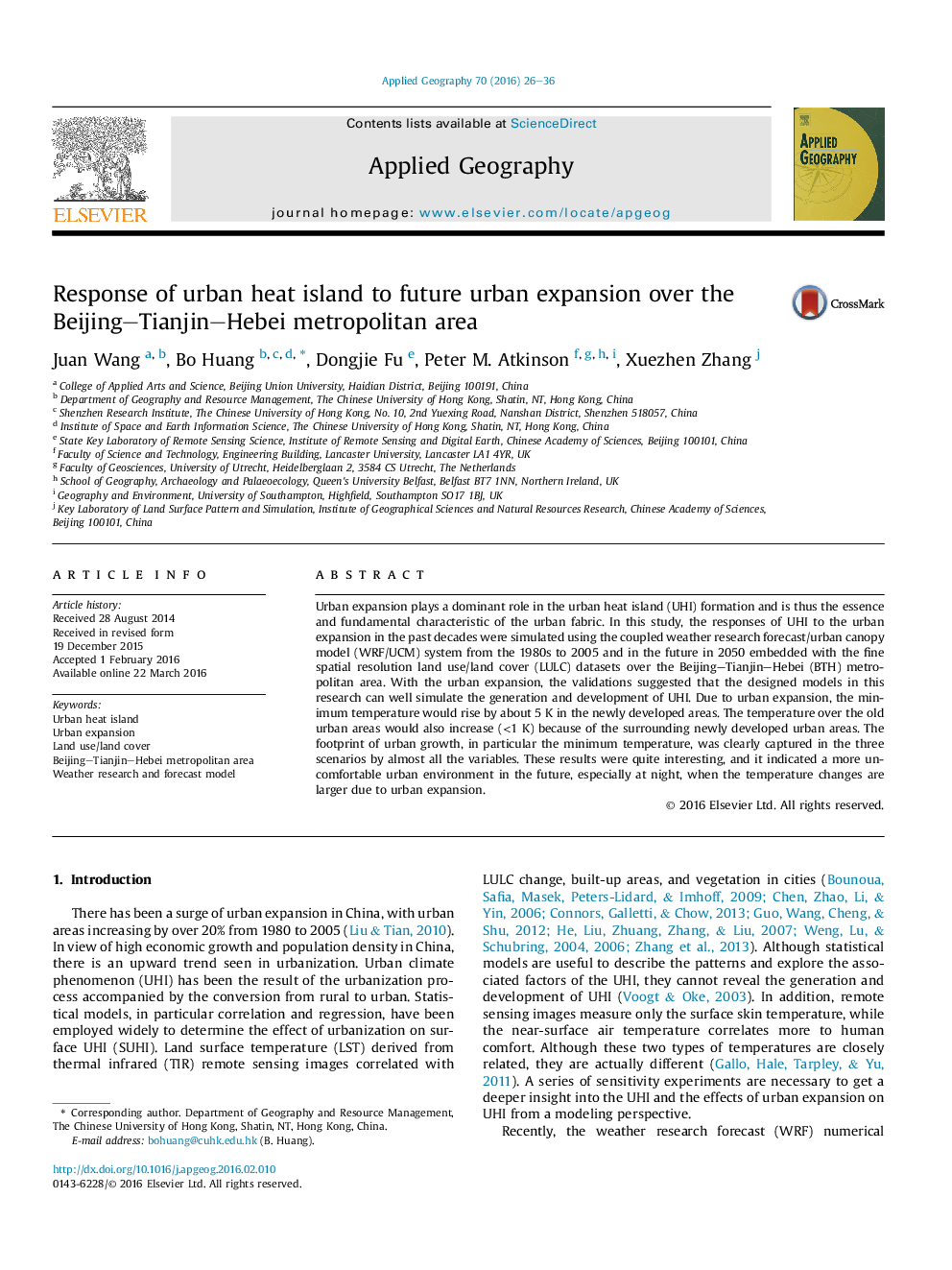| Article ID | Journal | Published Year | Pages | File Type |
|---|---|---|---|---|
| 6538404 | Applied Geography | 2016 | 11 Pages |
Abstract
Urban expansion plays a dominant role in the urban heat island (UHI) formation and is thus the essence and fundamental characteristic of the urban fabric. In this study, the responses of UHI to the urban expansion in the past decades were simulated using the coupled weather research forecast/urban canopy model (WRF/UCM) system from the 1980s to 2005 and in the future in 2050 embedded with the fine spatial resolution land use/land cover (LULC) datasets over the Beijing-Tianjin-Hebei (BTH) metropolitan area. With the urban expansion, the validations suggested that the designed models in this research can well simulate the generation and development of UHI. Due to urban expansion, the minimum temperature would rise by about 5Â K in the newly developed areas. The temperature over the old urban areas would also increase (<1Â K) because of the surrounding newly developed urban areas. The footprint of urban growth, in particular the minimum temperature, was clearly captured in the three scenarios by almost all the variables. These results were quite interesting, and it indicated a more uncomfortable urban environment in the future, especially at night, when the temperature changes are larger due to urban expansion.
Related Topics
Life Sciences
Agricultural and Biological Sciences
Forestry
Authors
Juan Wang, Bo Huang, Dongjie Fu, Peter M. Atkinson, Xuezhen Zhang,
